The Nintendo Switch OLED is finally here, and it’s a tempting prospect — especially if you don’t already own a Switch.
However, if you’re looking to buy Nintendo’s handheld hybrid for the first time, you shouldn’t just grab the OLED version and call it a day. There are three Switch variations from which to choose — the premium Switch OLED, the inexpensive Switch Lite and the middle-of-the-road base Switch — and each one offers certain advantages and drawbacks.
The good news is that there aren’t a tremendous number of differences among the three models. No matter which Switch you get, you’ll be able to play the same games, navigate the same interface and enjoy the same handheld experience. What sets the Switch models apart, for the most part, are their screen sizes and their TV connectivity, and those features are all easy to explain.
The Nintendo Switch OLED vs. Nintendo Switch vs. Nintendo Switch Lite contest doesn’t have to be a complicated issue if you know what you’re looking for and how much you want to spend. Here are the similarities and differences among the three devices.
Nintendo Switch OLED vs. Nintendo Switch vs. Nintendo Switch Lite: Specs
| Nintendo Switch OLED | Nintendo Switch | Nintendo Switch Lite | |
| Price | $350 | $300 | $200 |
| Screen | 7-inch OLED, 720p, 60 Hz | 6-inch LCD, 720p, 60 Hz | 5.5-inch LCD, 720p, 60 Hz |
| Dimensions | 9.4 x 4.0 x 0.6 inches | 9.4 x 4.0 x 0.6 inches | 8.2 x 3.6 x 0.6 inches |
| Weight | 14.9 ounces | 14.1 ounces | 9.8 ounces |
| Battery Life | 4.5 to 9 hours | 4.5 to 9 hours* | 3 to 7 hours |
| Storage | 64 GB | 32 GB | 32 GB |
| TV Docking | Yes | Yes | No |
| Detachable Joy-Cons | Yes | Yes | No |
| Color Options | Black and White / Red and Blue | Gray / Red and Blue | Gray / Turquoise / Yellow/ Pink / Purple |
*2019 and later. Models from 2018 and earlier offer 2.5–6.5 hours
Nintendo Switch OLED vs. Nintendo Switch vs. Nintendo Switch Lite: Similarities
First things first: No matter which Switch you buy, you’ll be able to play exactly the same games. That’s extremely important to know. Nintendo has not limited any of its games’ compatibilities based on the version of the Switch you own, and it’s unlikely to do so in the future. Every Switch console can play every Switch game, via either a physical cartridge or a digital download.
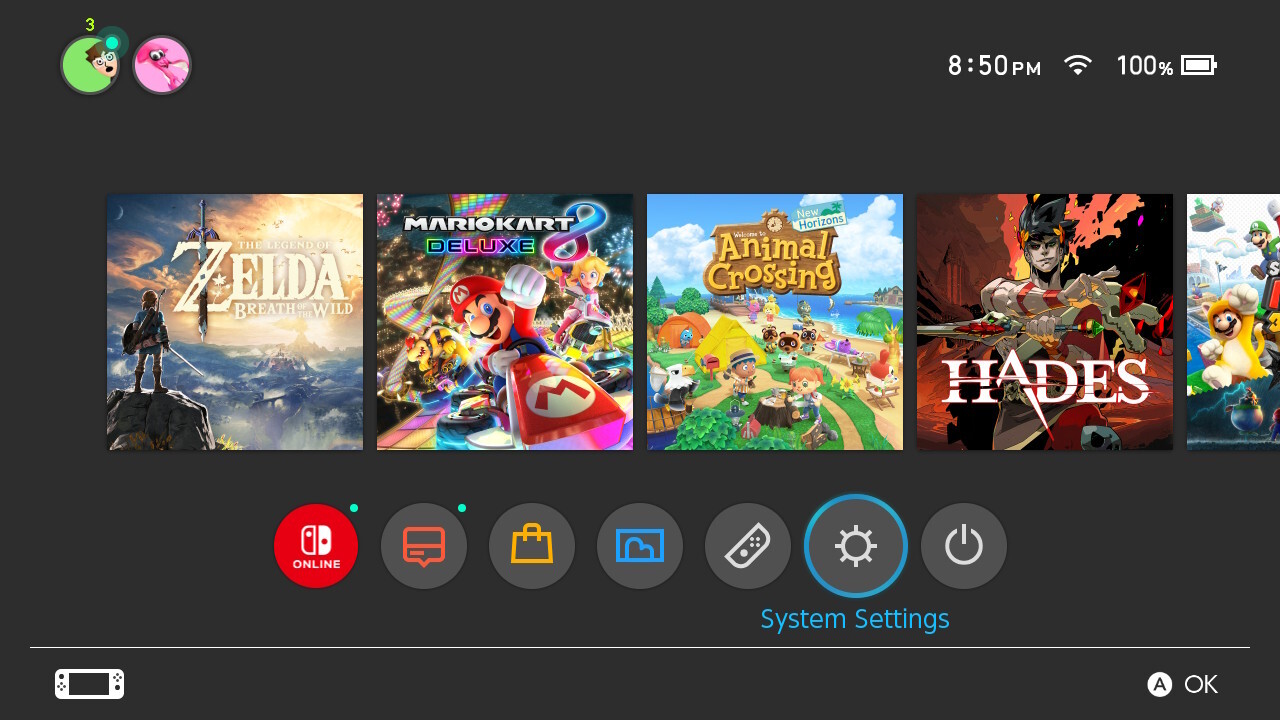
Similarly, the guts of each Nintendo Switch model are functionally identical. Each one runs off of a custom Nvidia Tegra X1 chipset, with 4 GB RAM and a microSD card slot to expand storage.
There are two slight differences here: the Switch Lite runs a Tegra X1+ chip, which improves battery life for the smaller device. The Switch OLED offers 64 GB internal storage, as opposed to the base Switch and Switch Lite, which each offer 32 GB. The Tegra X1+ does not appear to enhance the Switch Lite’s gaming performance, however. Likewise, the storage differences aren’t super-important, since it’s both easy and inexpensive to expand storage via microSD.
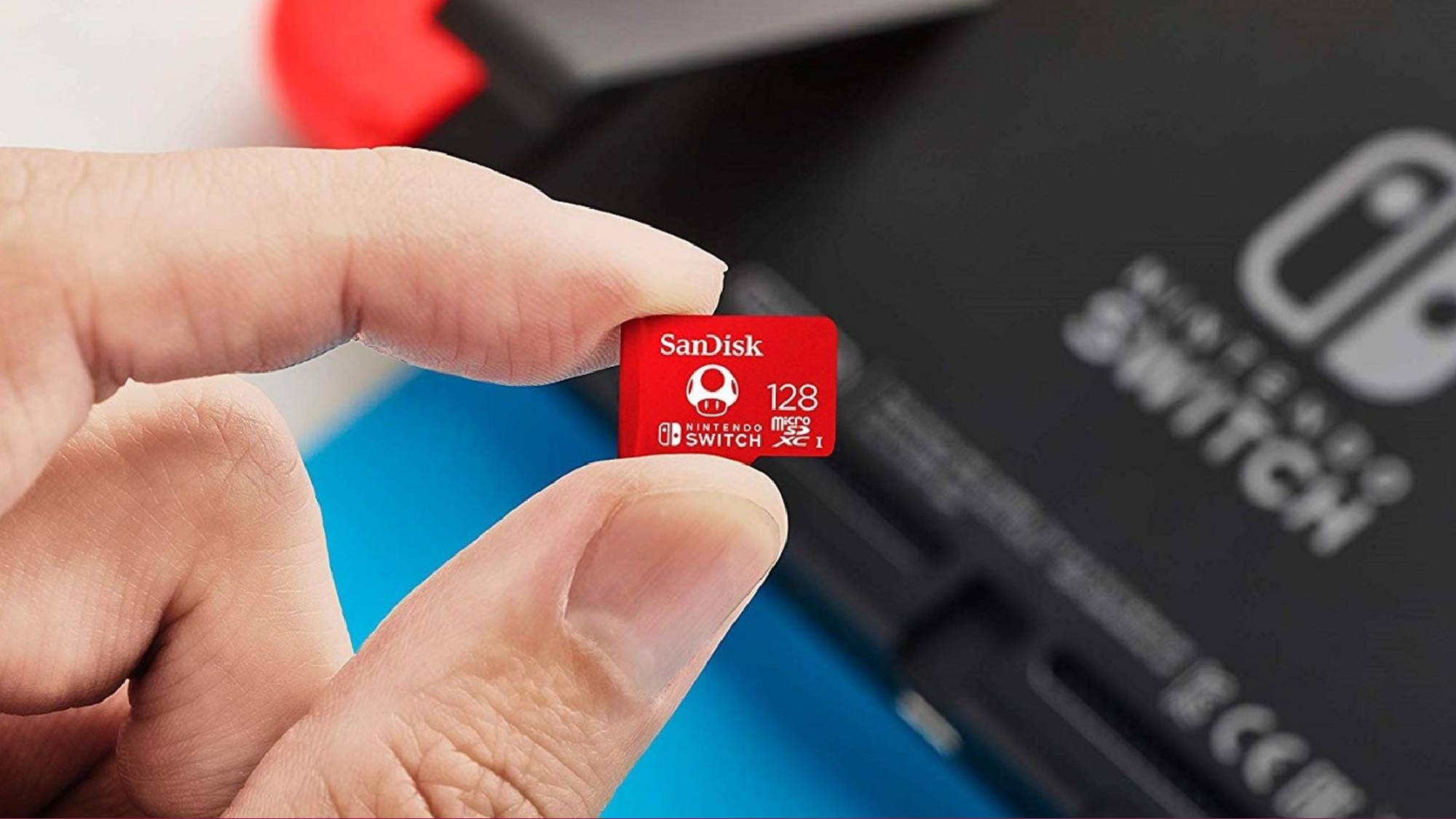
Every Switch model functions in a handheld mode; every Switch model uses the same straightforward OS to navigate through games and apps; every Switch model supports Wi-Fi connectivity, Bluetooth audio and a handful of USB-C accessories.
If you take the Switch Lite out of the picture for a moment, the similarities are even more striking. The base Switch and Switch OLED are exactly the same size and almost the same weight. They offer nearly the same battery life. They can both connect to TVs and detach their Joy-Cons for impromptu multiplayer sessions.
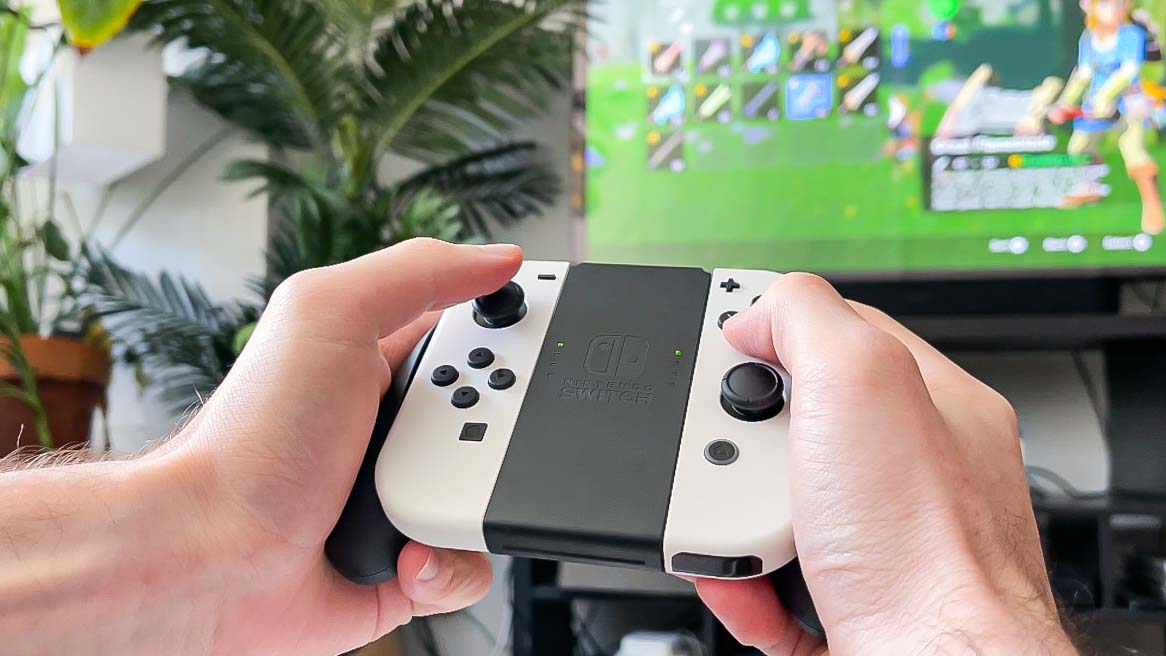
In other words: while the three Switch models aren’t exactly interchangeable, you can’t go too wrong with any of them.
Nintendo Switch OLED vs. Nintendo Switch vs. Nintendo Switch Lite: Design
The Switch and Switch OLED are, for the most part, interchangeable in terms of physical design. While the base Switch is a little lighter (less than an ounce), they both share the same profile: a central touchscreen tablet with a detachable Joy-Con controller on either side.
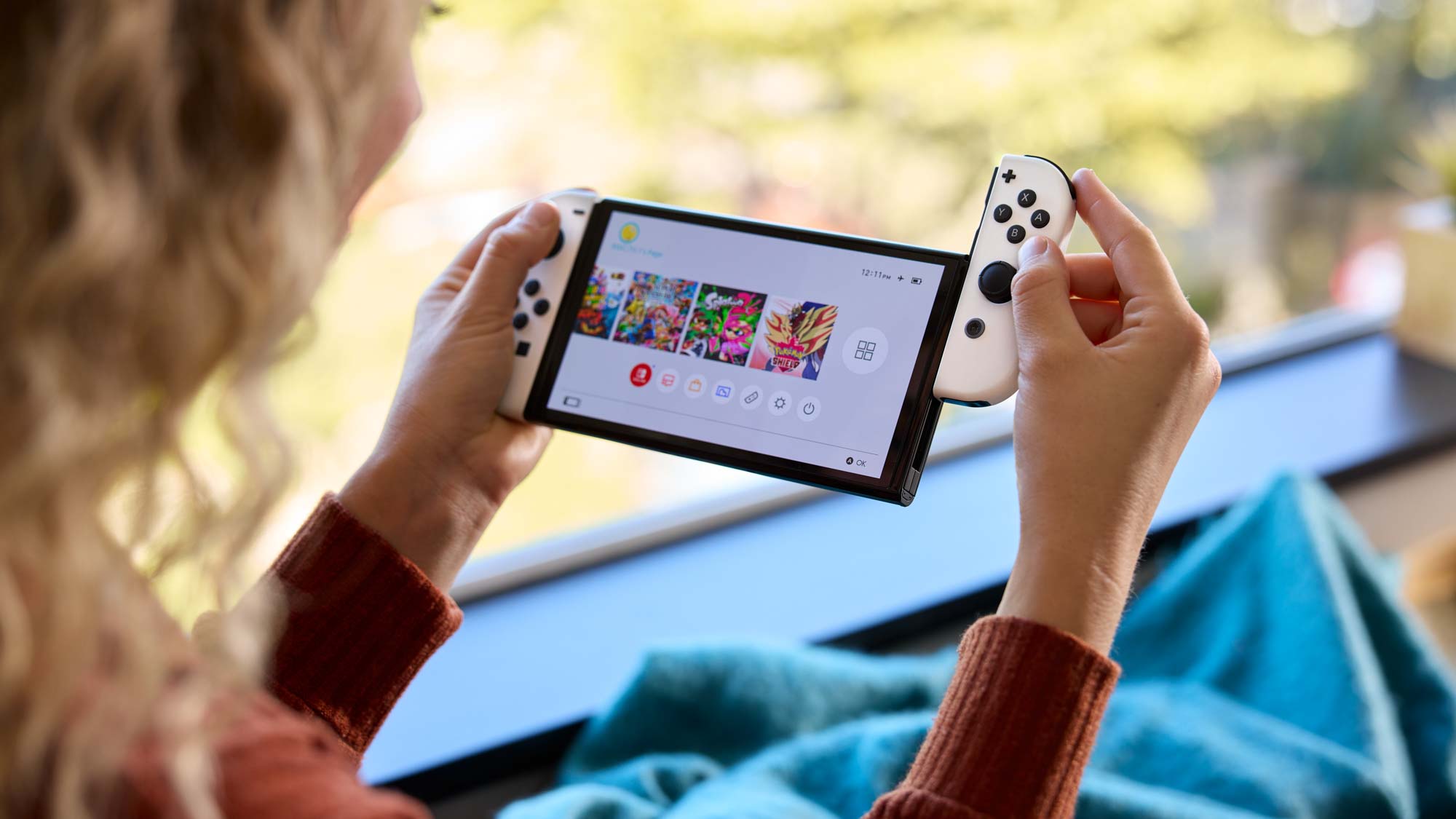
There are two main differences between the base Switch and the Switch OLED, apart from their screens. The first is that the OLED has larger, more robust speakers. The second is that the OLED has a study kickstand that runs the length of the whole device, while the base Switch has a flimsy kickstand that takes up only a few inches of space.
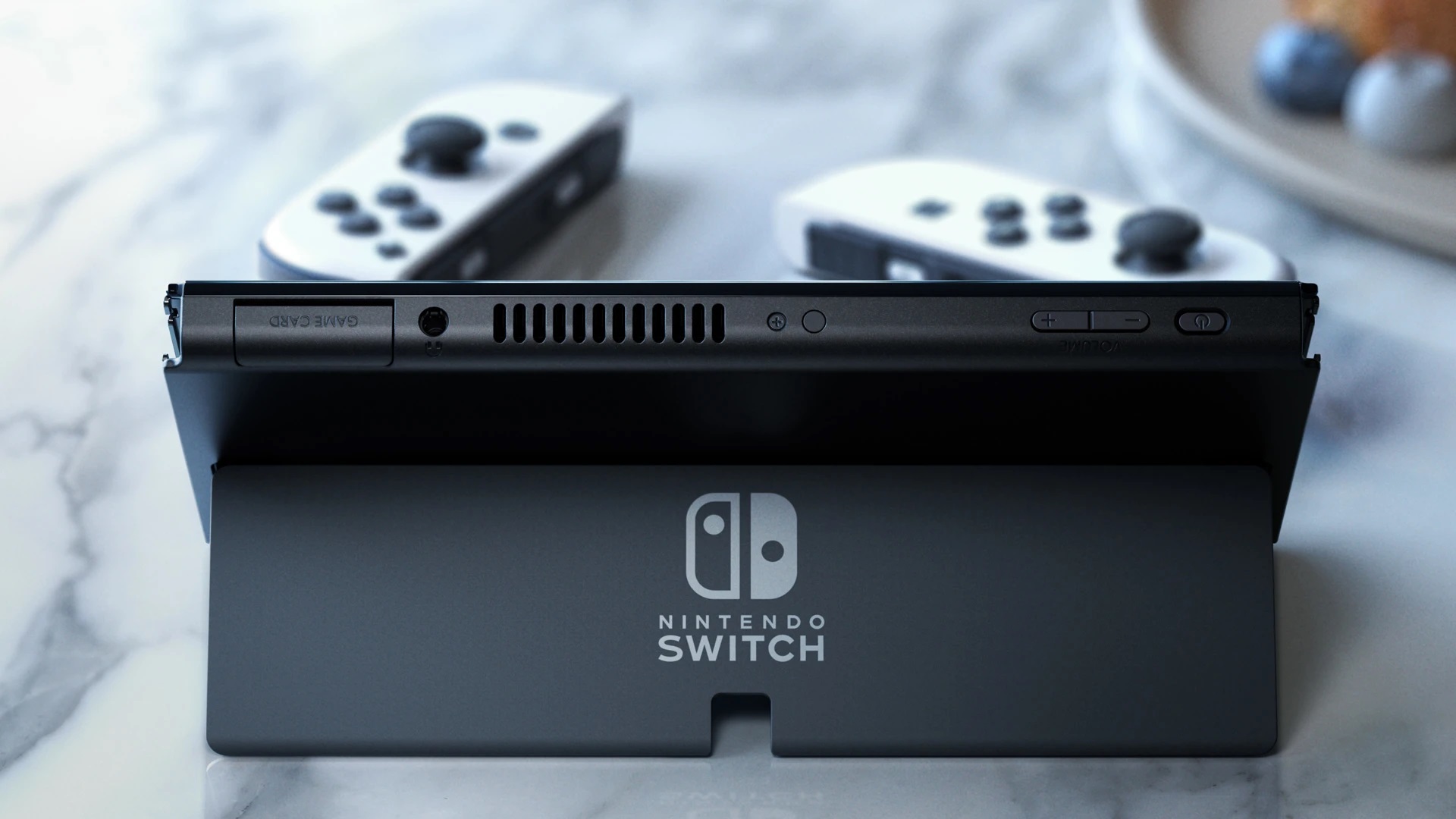
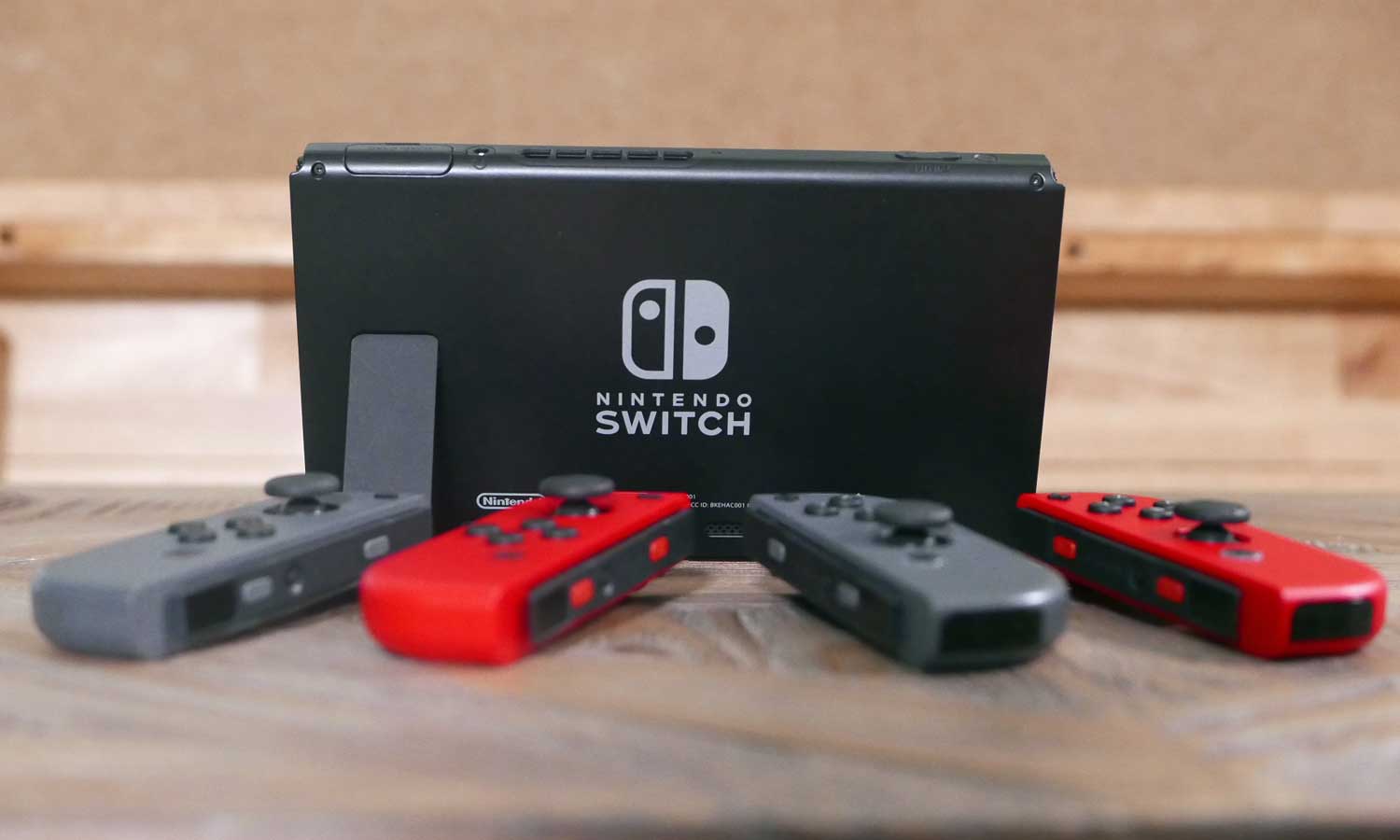
The Switch Lite, on the other hand, is a different beast altogether. It’s a much smaller console (eight inches across instead of nine-and-a-half), and doesn’t have any options to dock it with a TV. As such, you can play it only in handheld mode.
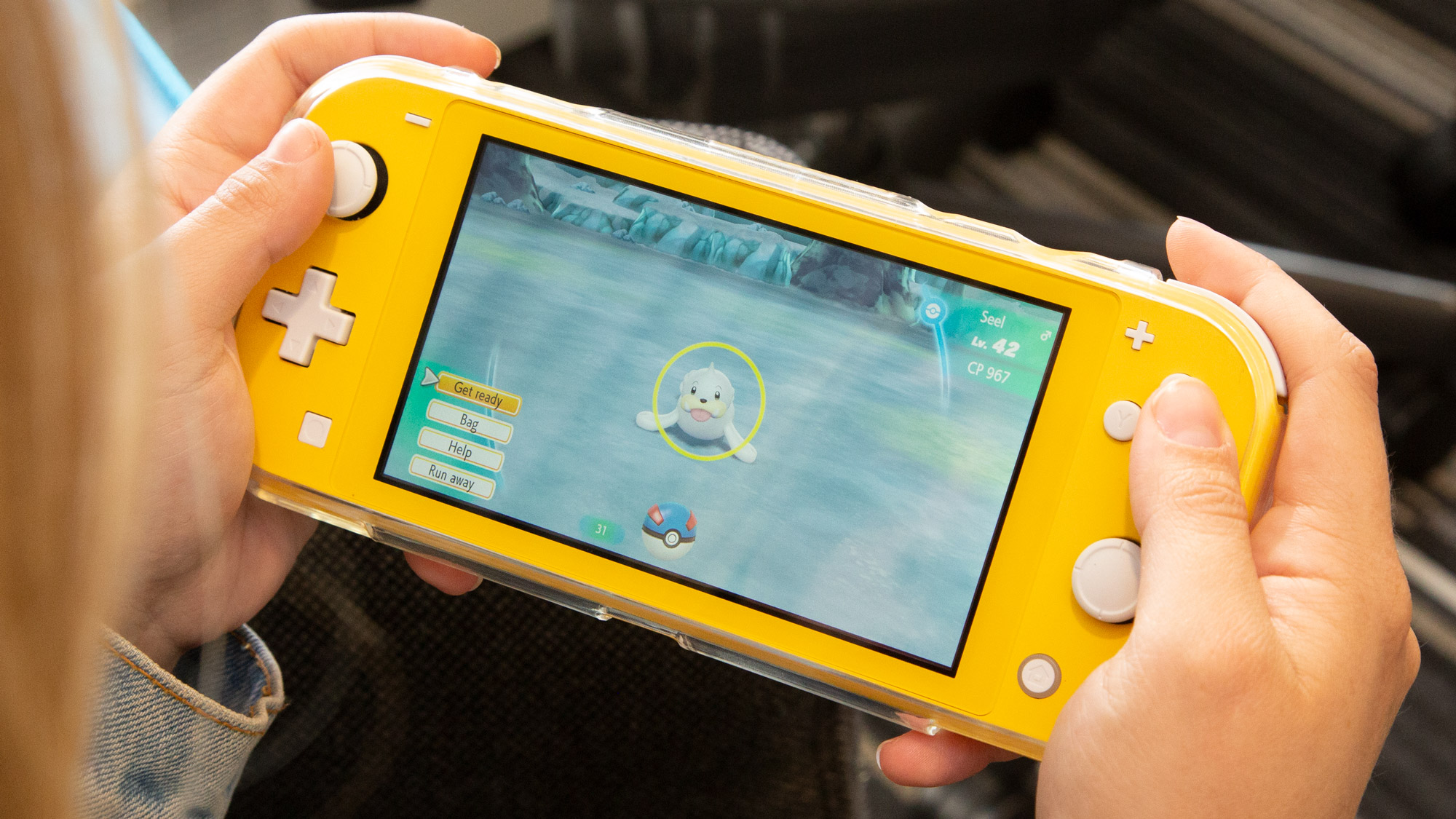
The controls are also hardwired into the console, so there are no Joy-Cons to remove. The Switch Lite does have one big benefit over its bigger brethren, though: an actual D-Pad rather than four uncomfortable directional buttons.
Nintendo Switch OLED vs. Nintendo Switch vs. Nintendo Switch Lite: Screen
The most noticeable — and possibly most substantial — differences among the three consoles are their screens. All three of them are different sizes, and one of them is made from a different material.
In this case, the base Switch and Switch Lite have the most in common. Both are traditional LCD screens. The only difference is that the base Switch’s screen is six inches diagonally, whereas the Switch Lite’s screen is five-and-a-half inches diagonally.
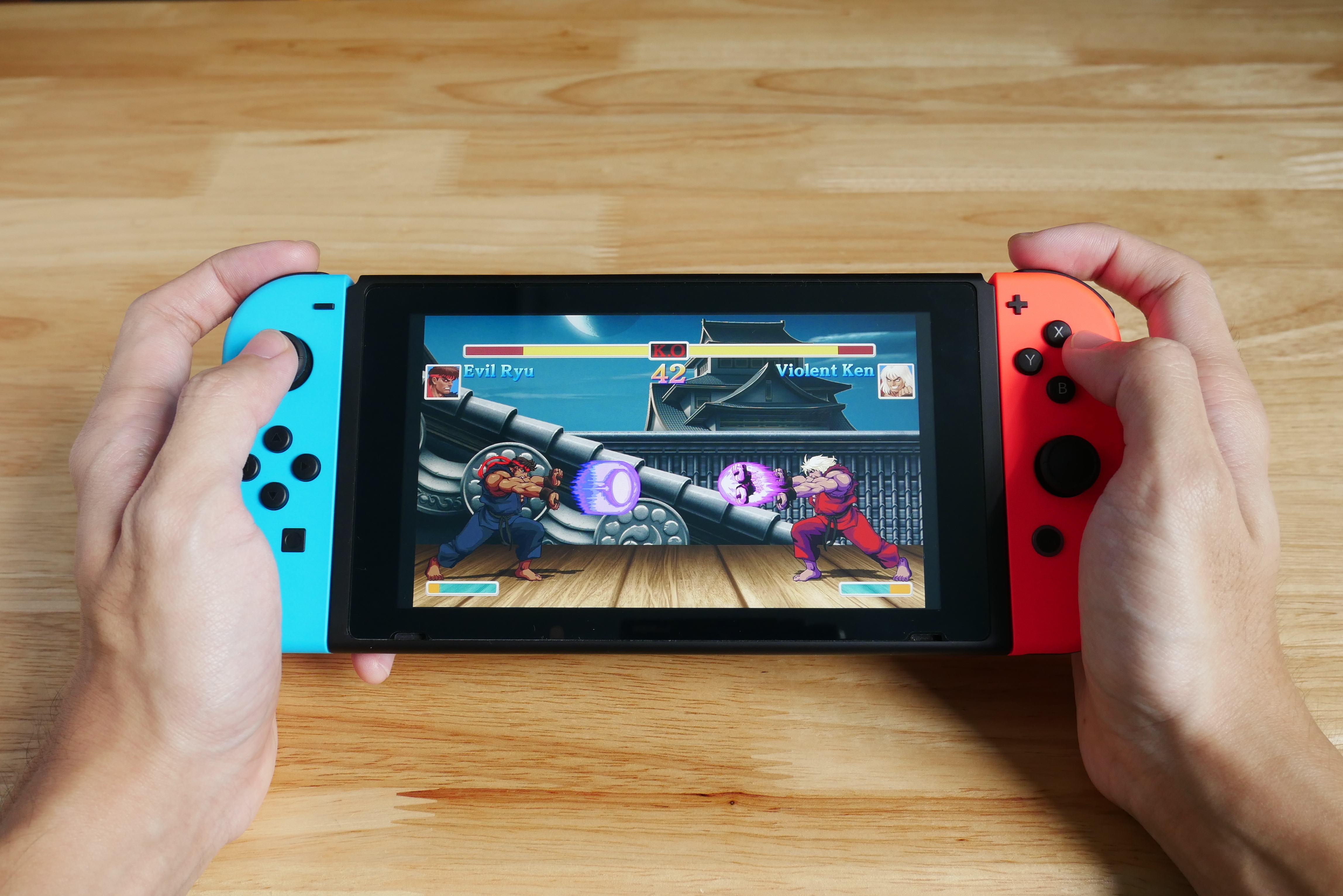
The Switch OLED, on the other hand, is a different beast. Not only is the screen bigger (seven inches diagonally), but it’s also not a traditional liquid crystal display. Instead, it’s based on organic light-emitting diode technology. Without going on a long tangent about what OLED is, OLED screens generally produce more vibrant colors and deeper blacks.
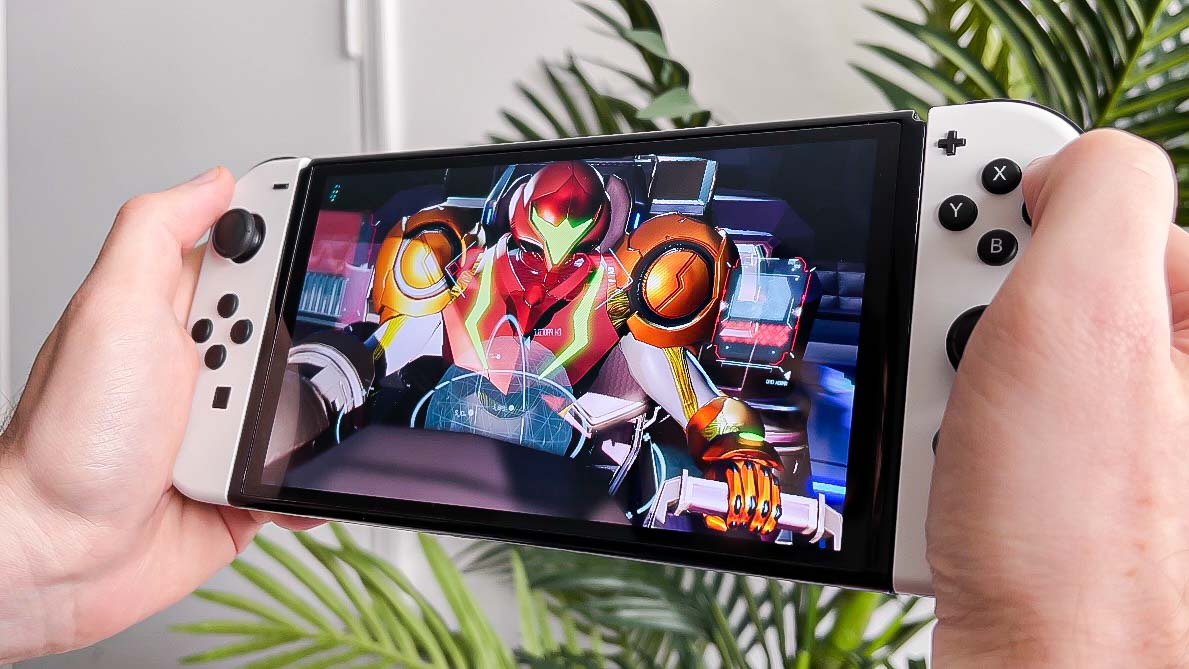
In terms of output, however, all three screens are identical: 720p resolution at up to 60 frames per second.
Nintendo Switch OLED vs. Nintendo Switch vs. Nintendo Switch Lite: Dock and TV compatibility
The primary disadvantage of the Switch Lite is that you can’t connect it to a TV. It’s a pretty sizable drawback. Obviously, Nintendo considers the ability to switch between handheld and docked modes important enough to name the whole console after the feature.
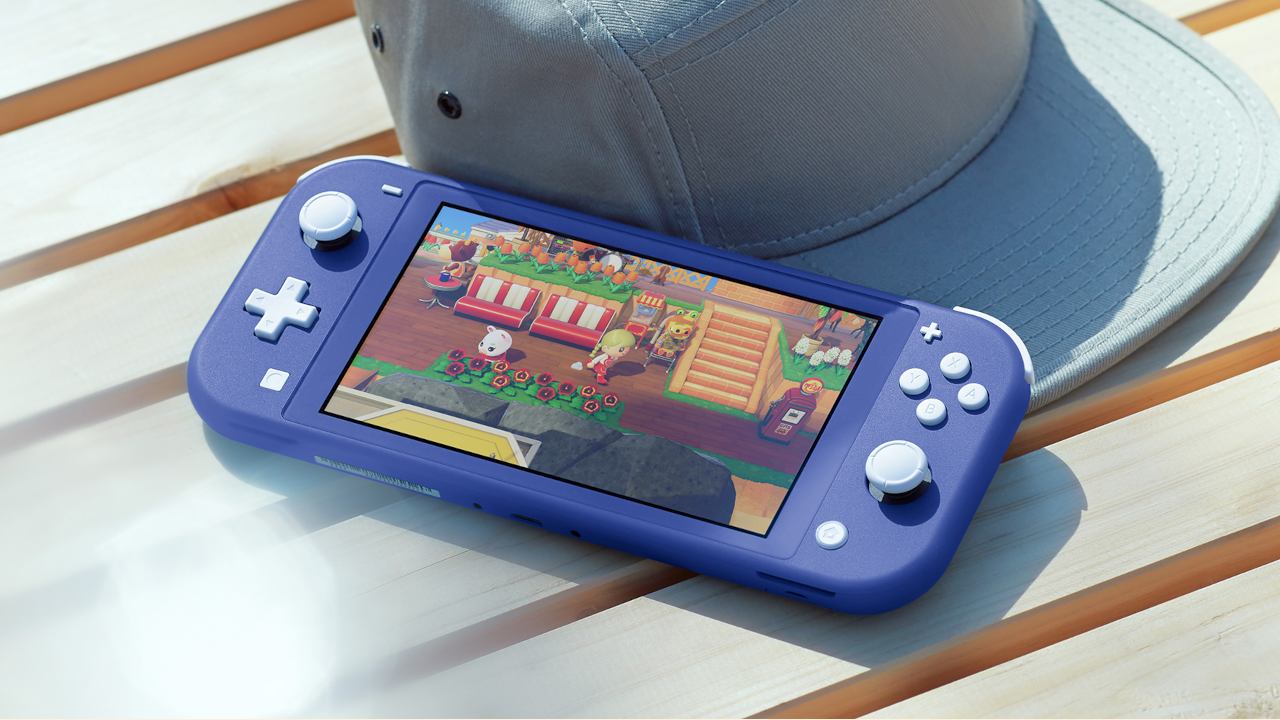
Still, there are some folks out there who really have no interest in playing the Switch on a TV screen. The Switch Lite is also arguably a good match for younger kids, especially if there’s a dearth of shareable TVs in the house.
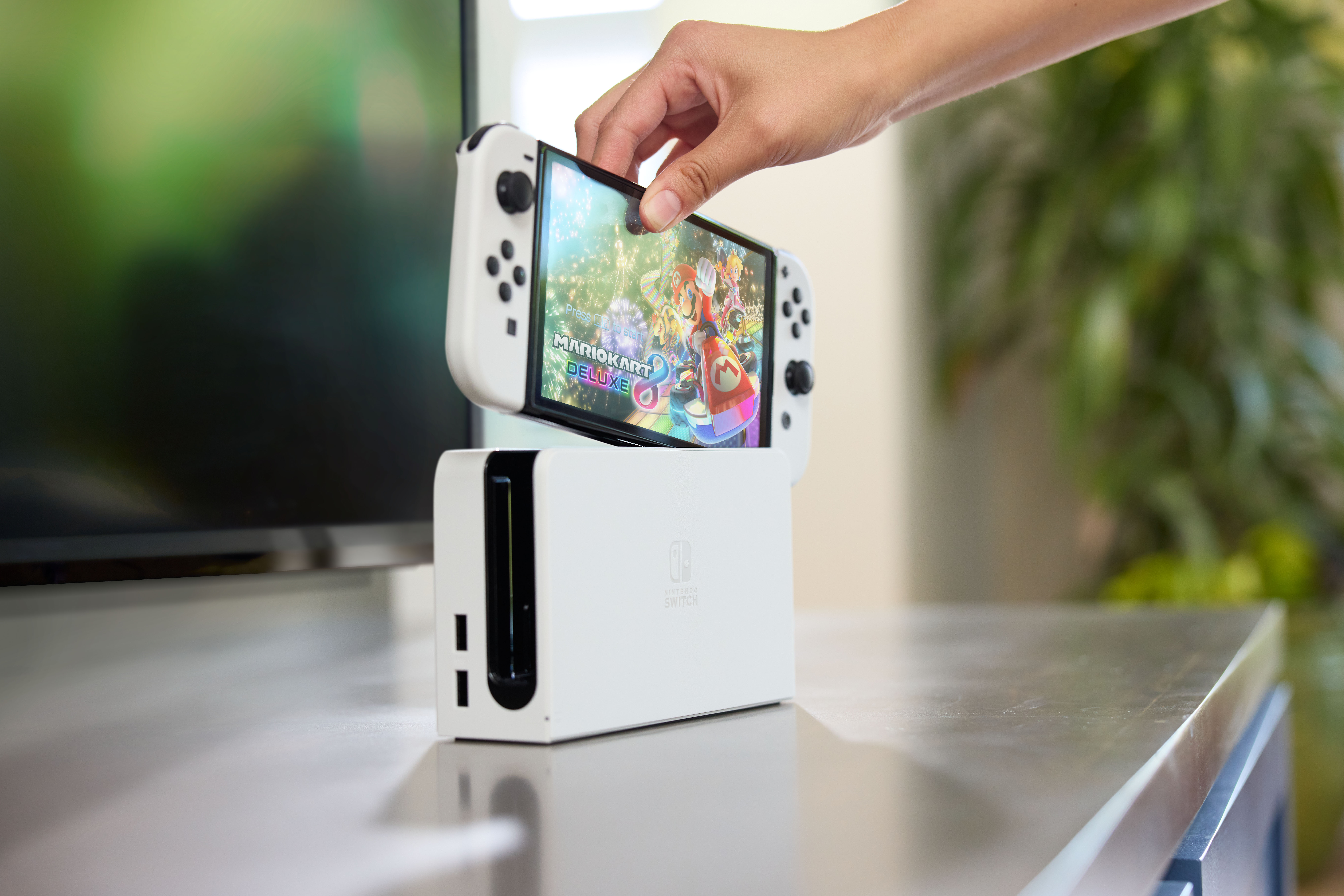
The base Switch and Switch OLED can both connect to a TV without issue, as each one comes with a dock. The docks, however, are ever-so-slightly different. The Switch OLED dock comes with a built-in Ethernet port, whereas the base Switch dock doesn’t. If you want to use a LAN connection in docked mode, then getting a Switch OLED is a no-brainer for that reason alone.
Nintendo Switch OLED vs. Nintendo Switch vs. Nintendo Switch Lite: Controllers
The Nintendo Switch OLED and base Switch have exactly the same controller options. By default, they come with two detachable Joy-Cons. The Joy-Cons are versatile controllers. You can combine both of them in a controller mount; you can play with one in each hand; you can even use each Joy-Con as a tiny standalone controller, in case you want to get a spontaneous multiplayer match going.
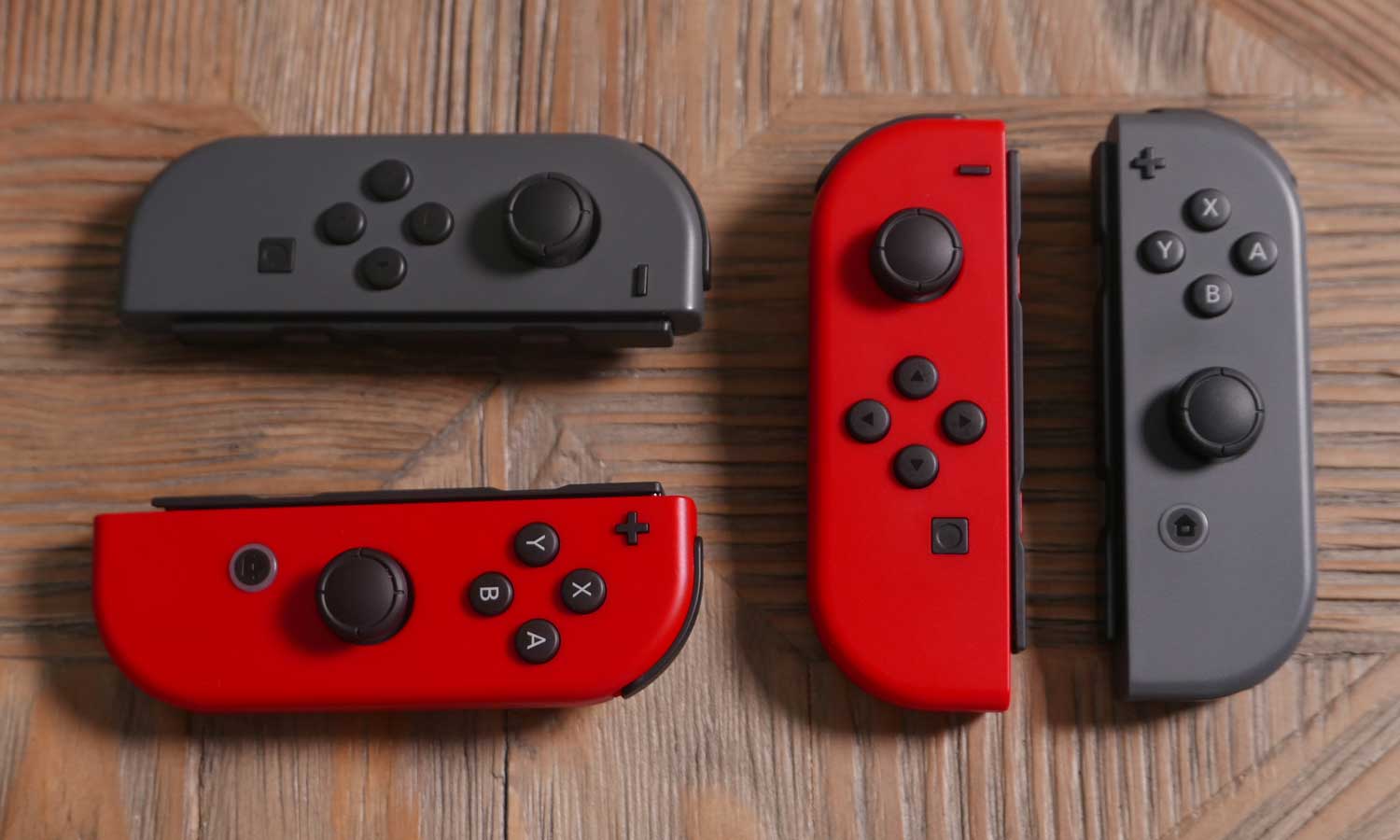
The Switch Lite, by contrast, doesn’t have detachable controllers. What you see is what you get.
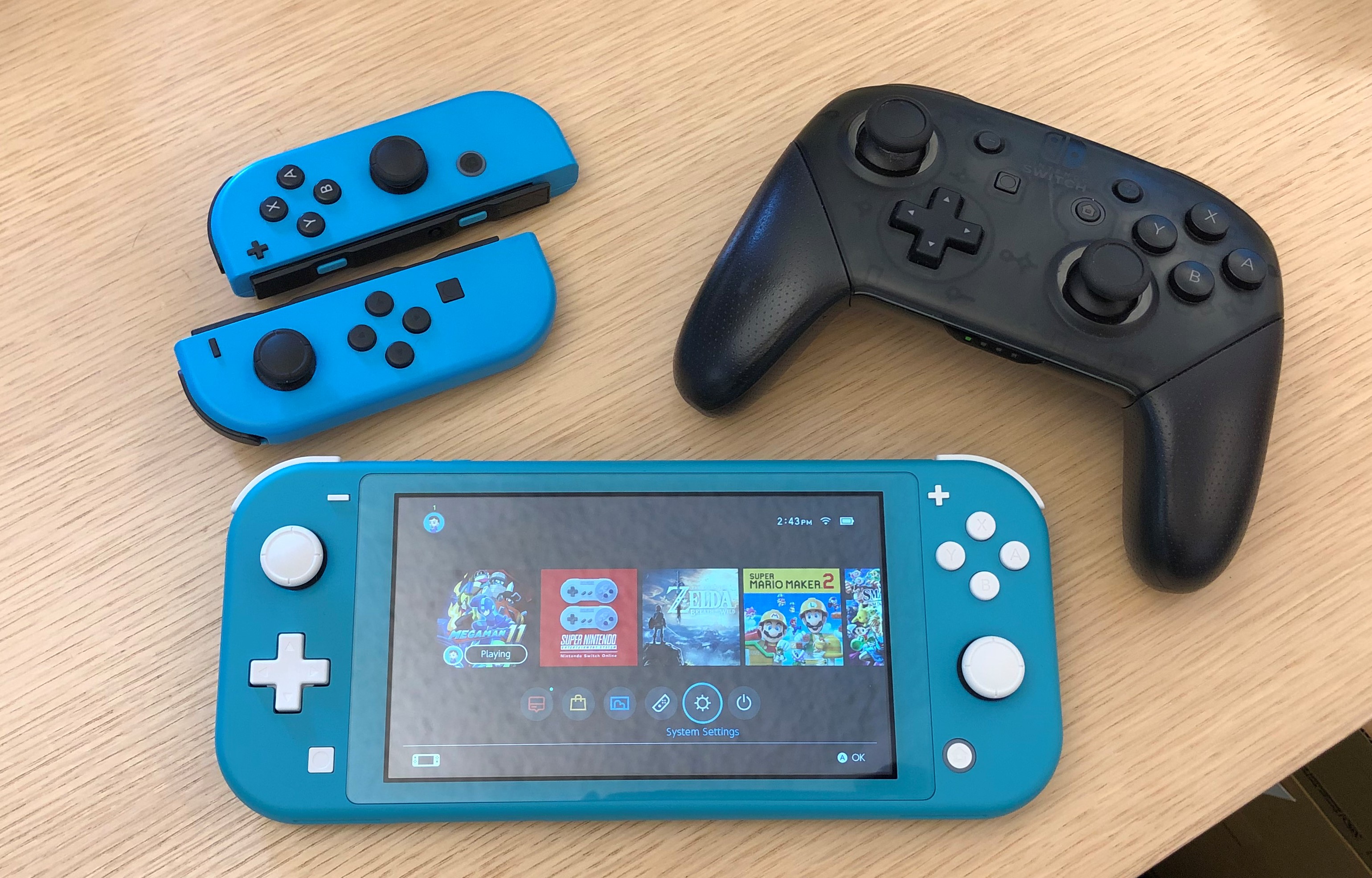
Granted, you could pair Joy-Cons (or the superior Switch Pro Controller) with any of the Switch models, including the Lite. But since the Switch Lite doesn’t stand freely, using external controllers with it is a bit of a challenge. You’d have to buy a third-party case or stand.
Nintendo Switch OLED vs. Nintendo Switch vs. Nintendo Switch Lite: Battery life
Due to its smaller chassis, the Switch Lite also has a smaller battery. Depending on the game, the Switch Lite can get between three and seven hours of battery life. (More demanding games, like Zelda and Metroid, tend to drain the battery faster than retro or indie fare.) In our own testing, the Switch Lite lasted for three hours and 18 minutes on a single charge.
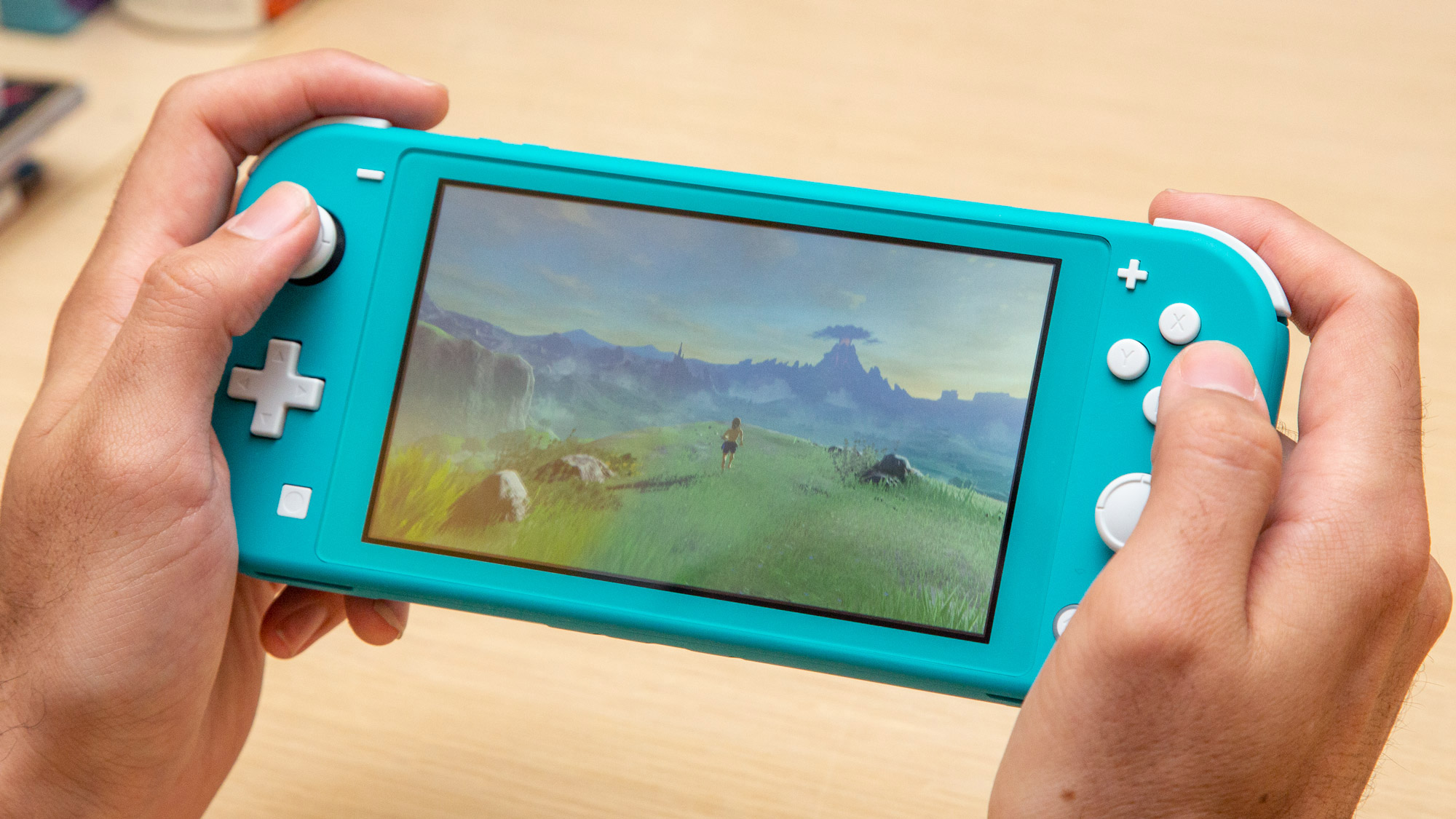
The Switch OLED and base Switch theoretically have the same battery life: between four-and-a-half and nine hours, according to Nintendo. The OLED screen is bigger, but also more power-efficient.
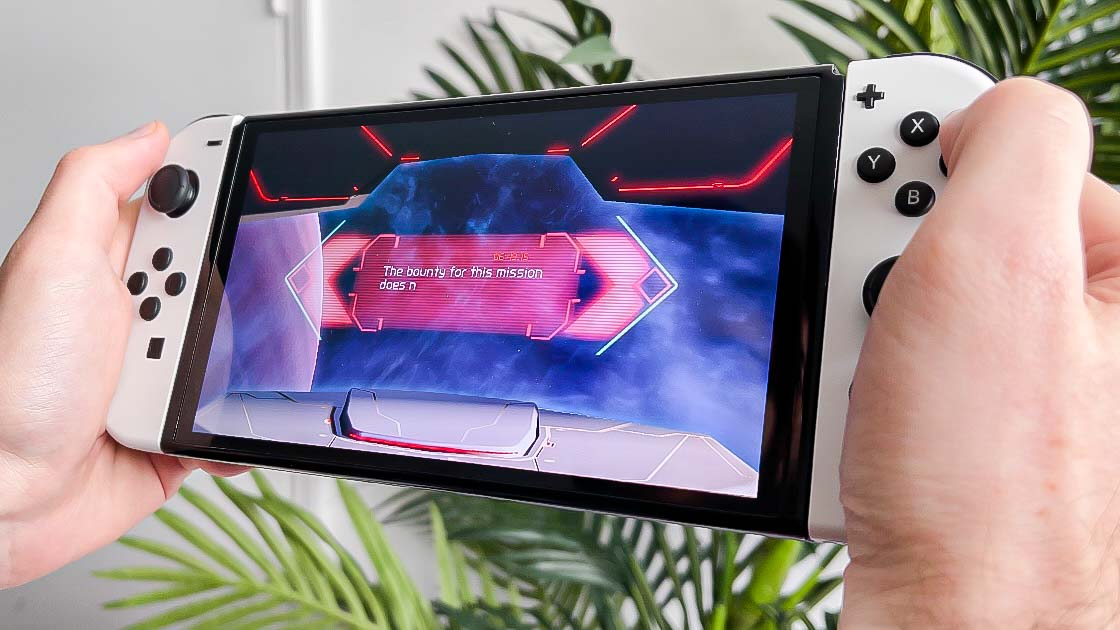
This calculus changes, however, depending on whether you have a launch-model Switch (from 2017 or 2018) or a refreshed Switch (from late 2019 to the present). Back in November 2019, Nintendo slapped a more efficient battery into the base model, which means that newer Switches simply have more battery life than older models do. The good news is that if you buy a new Switch today, you’re guaranteed to get the 2019 refresh.
In our own testing, the Switch OLED got five hours of battery life on the dot, while the launch-model base Switch got three hours and 27 minutes. However, our base Switch is a 2017 model; we’ll reevaluate once we have a refreshed version.
Nintendo Switch OLED vs. Nintendo Switch vs. Nintendo Switch Lite: Price
Another major difference among the three Switch models is how Nintendo has priced them. The Switch OLED is the most expensive of the bunch at $350; the Switch Lite is the cheapest at $200; the base Switch is in-between at $300.
The price differences are easy enough to explain. The Switch OLED is the most feature-rich of the three devices, so it costs the most. Likewise, the Switch Lite cuts out a lot of ballast to get to $200.
The only sticking point is the base Switch. At $300, it’s arguably still pretty expensive, given that the OLED is a much better system for only $50 more. (To put things in perspective: an Ethernet adapter alone costs $30).
Still, the base Switch recently got a price cut in Europe; perhaps North America will follow suit.
Nintendo Switch OLED vs. Nintendo Switch vs. Nintendo Switch Lite: Recommendations
The Switch model you should get depends on your budget and your preferences. If money is no object and you want the full-featured Switch, get the Switch OLED. If money is tight, or you can’t imagine ever hooking the device up to a TV, go for the Switch Lite. I will say that the Switch Lite is a pretty easy recommendation for young children, but tweens and teens will appreciate the base or OLED Switch’s versatility.
At present, I can’t think of a great use-case for the base Switch. For an additional $50, the OLED is a considerably better product, particularly its screen and kickstand, and the two models’ functionality is identical otherwise.
However, if the base Switch does get a price cut — to $250, for example — then I think it could find its own niche. Once you hook up the Switch OLED to a TV, its screen, speakers, and kickstand are meaningless. Therefore, if you intend to play your Switch largely in docked mode, a cheaper base Switch could make a whole lot of sense.
Until that happens, though, stick with the Switch OLED — or the Switch Lite, if you want to save some money.
For all the latest Technology News Click Here
For the latest news and updates, follow us on Google News.
